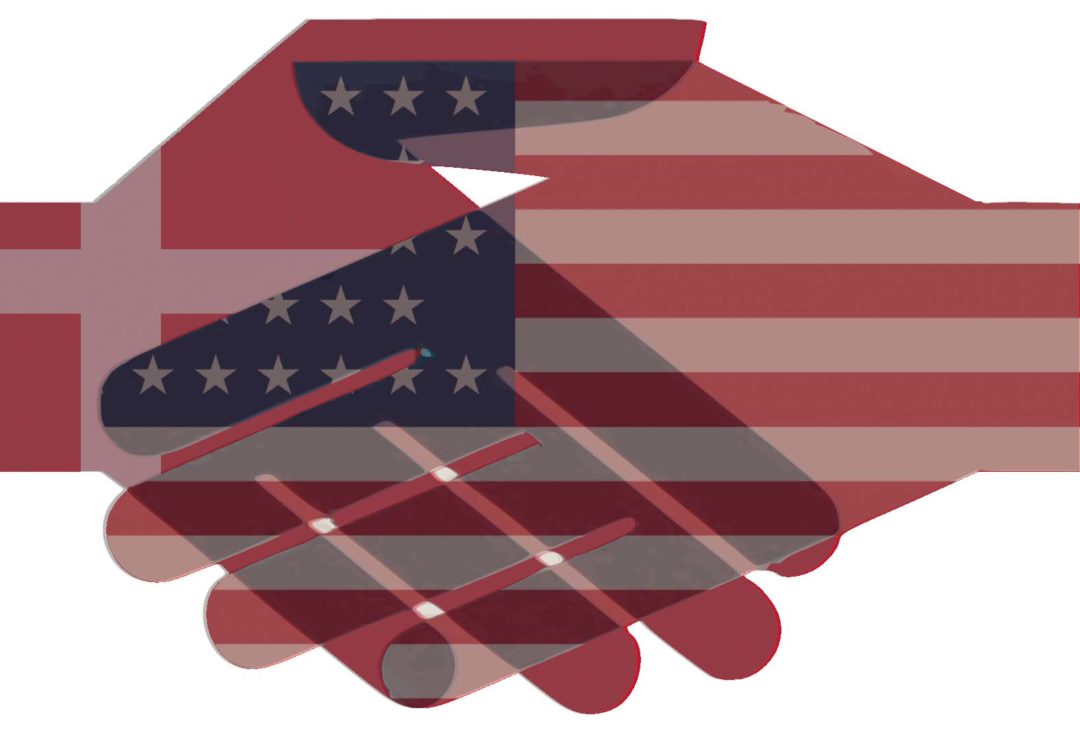As an American who has lived in Denmark for more than 10 years, I’m often asked for tips by Danes working with Americans.
It’s usually the smartest people in the organization who ask the question: others seem to assume that because they speak great English and have watched every episode of “Friends” or “Breaking Bad” they have a good enough handle on the American culture way of doing business. As the great American composer George Gerwshin once wrote, “It ain’t necessarily so.”
Here are a few tips taken from my new book “Working with Americans: Tips for Danes“, which is available on Amazon, Saxo, Google Play, iTunes, and from our own webshop.
Fear of lawyers and lawsuits
U.S. companies and employees live in constant fear of litigation. When I first arrived in Denmark, I remembered being shocked at traditions that could make an American liabilities lawyer rich. Whether it was bonfires at a børnehave, hot coals to warm your hands on at Tivoli, or drunk studenter falling off the back of trucks, I couldn’t help thinking about how a stupid or careless person might injure himself and sue.
American businesses think about this all the time, since they have two things on their mind: how to stay in business at a profit, and how to avoid litigation, since the second can make the first impossible. Every business decision, every product development or marketing technique, every hiring and every firing, has to be looked at through the lens of : Can we be sued for this?
Even official social events take place in the shadow of possible litigation. This is why Americans have trouble understanding the amount of alcohol served at Danish office parties. An American boss has to keep in mind that if someone misbehaves at or on the way home from one of these parties, the company may be held liable. And if the boss herself makes has one too many cocktails and makes a smart remark about an employee’s anatomy or ethnicity, she could end up in trouble with HR at best, and with a career-ending lawsuit at worst.
Better to stay sober and go home early, or stage the party at a local bar where people buy their own drinks and are therefore responsible for what they do afterwards. (The bar, however, might be held liable in some cases.)
American diversity is a wonderful resource – and a constant challenge
The U.S. is no longer the mostly White and Black populace you might imagine from the movies and music videos popular on Danish TV. While the greatest number of immigrants to the U.S. now come from Asia, the country is also home to Arab-Americans, Native Americans, and Hispanic and Latino Americans, who have roots in Central and South America but can be of any race.
Most Danish companies who do business in the U.S. have figured out that it’s no longer OK to produce marketing materials showing only White faces. But diversity is more than skin color and ethnic background. It includes other ‘protected classes’, including women, older Americans, people who are ‘differently abled’ (from using a wheelchair to suffering from mental illness) and LGBTQIA+ Americans.
For example, I had a Danish client who had put together a “Valentine’s Day Quiz” to sell its product – but based the entire game around heterosexual couples. These days, that’s a turnoff to straights as well as gays. Better to make the whole thing gender neutral.
Diversity also requires strict protocols for hiring and firing. You must have everything written down so, if necessary in a court of law, you can prove that person A was treated exactly like person B. This kind of record-keeping can seem annoying and petty for Danes accustomed to informality and used to operating with a high level of trust.
“Toot your own horn”
Americans are taught to ‘sell themselves’ and will expect Danes to do the same.
One of the worst things a Dane can be called is a bilsælger, a pushy promoter. But Americans have grown up in a much more competitive environment than Danes have, and have learned from an early age that getting into the ‘best’ schools, the ‘best’ universities, the ‘best’ internships and the ‘best’ jobs requires a good dose of self-promotion. My mother used to tell me that in the business world, I’d have to “spend 80% of your time doing a great job, and 20% of your time telling people you’re doing a great job.”
This can leave Americans at a loss when dealing with Danish understatement and self-irony. Unless they’ve received cultural training, they might take Danish self-restraint as lack of confidence, laziness, or even ‘dead wood’ that the company no longer needs.
I remember being involved in a project in which a Danish company had been purchased by an American one, and a team of mid-career Danish engineers was set for one-on-one meetings with their new bosses.
My advice was that they should explain to their new bosses exactly what their work had produced and how it had contributed to the company’s successful products, and would continue to do so. They should ‘toot their own horn’ as the American expression goes.
The engineers were, understandably, horrified.
Working hours, work-life balance, and Danish welfare state envy
If the Danish working model is built on flexicurity, the American model is built on fear. Since there is very little safety net in the U.S., an American who loses his or her job can fall very far, very fast.
This is one of the reasons Americans with well-paying jobs take so few vacations, and when they do, they tend to take short ones. The fear is: If my boss notices that everything runs smoothly when I’m out of the office, I might not have a job when I get back.
This is also why your American colleagues repeatedly emphasize that they very, very busy – joining to a phone meeting 15 minutes late, for example, because they were so very, very busy doing something else extremely important. The fear is: If I’m not busy all the time, the company may realize they don’t need me.
Your American colleagues will no doubt comment on the short Danish working hours, with the office a ghost town by 5pm while the Americans work on into the evening.
But having worked at Fortune 500 companies in both countries, I can say that Danes work fewer hours because they work efficiently, and with focus.
When I worked on 12-hour days on Wall Street, there were a lot of long lunches, taking a quick nip out to pick up my dry cleaning, or using the company’s secure IT network to send Grandma flowers on her birthday. In other words, those 12 hours weren’t 100% work.
Danes, by contrast, want to get the job done quickly so they can go home to their families.
While Americans love their families as much as Danes do, an American executive who leaves a position because he “wants to spend more time with my family” is using a code word for “I got fired.”
Book an event
If you represent a company or organization and would like to have Kay Xander Mellish, an American keynote speaker in Denmark, make a presentation to your group, contact Kay via this site’s contact form for more information.
Alternately, you can read more about all of Kay’s events on the How to Live in Denmark events page.

Buy Kay Xander Mellish’s new book, Working with Danes: Tips for Americans/Working with Americans: Tips for Danes on our webshop, or at Amazon, Saxo, Google Books, Apple Books, Barnes & Noble Nook, or via our webshop.
Or follow Kay on LinkedIn.
Image mashup copyright Kay Xander Mellish 2025
Read also:
Danish Managers and American Managers: 5 big differences
Tips for Working with Americans in Børsen
US and Denmark: The enthusiasm gap
Amerikansk foredragsholder Kay Xander Mellish
Working with Americans: Tips for Danes – get the book!




